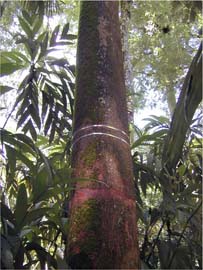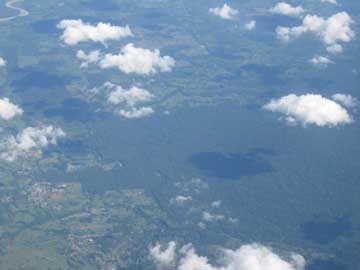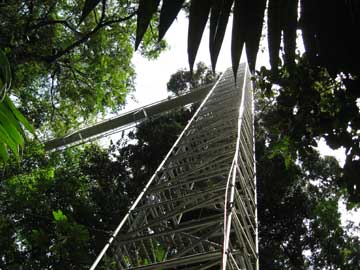Verano Project
Causes and implications of dry season control of tropical wet forest
tree growth at very high water levels: direct vs. indirect limitations.
A study of dry season drivers of tree growth in old growth rainforest of Costa Rica
Recent
research in Costa Rica has shown that the growth of tropical moist
forest trees is strongly related to the strength of the dry season
across a range of rainfall that by all standard measures would be
considered more than sufficient for growth. Understanding the
basis for this finding is crucial because tropical moist forests play
important roles in the global carbon and water cycles and therefore
regional and global climate. Predicted future warming and drying
of tropical moist forests could have strong feedback effects on global
climate. However, recent satellite studies from the Amazon report
that trees have their greatest leaf cover during the dry season,
suggesting that the dry season does not affect production. These
two findings suggest a serious gap in our understanding of role of the
dry season on tropical tree growth and carbon sequestration.
Dry-season controls on tree growth could result from both direct water
limitation or via other indirect mechanisms. The study will
use both observational and experimental approaches test hypotheses of
direct water limitation and indirect mechanisms to determine the basis
for the dry season rainfall correlation with growth. Measurements
of growth and ecosystem carbon, water and energy balance will be used
to evaluate the importance of dry season growth reduction for regional
climate.
Personnel
Steven Oberbauer- Florida International University
Joseph J. O'Brien- USDA Forest Service
Diego Dierick- Florida International University
Vinicio Paniagua - Organization for Tropical Studies
Danilo Villegas - Organization for Tropical Studies
Marilyn Veiman - Organization for Tropical Studies
This material is based upon work supported
by the National Science Foundation. Any opinions, findings, conclusions,
or recommendations expressed in the material are those of the
author(s) and do not necessarily reflect the views of the National
Science Foundation.









